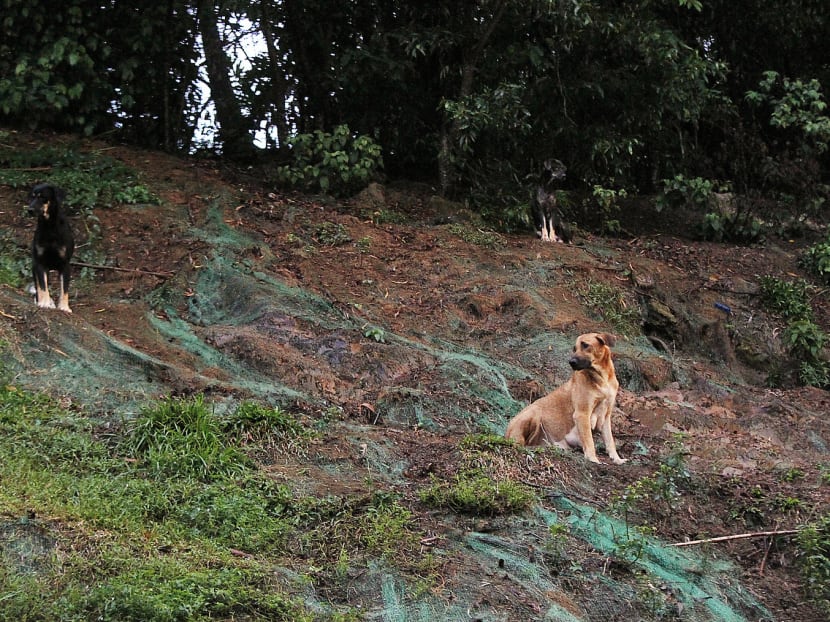Spotlight unfairly thrown on stray feeding: Animal activists
SINGAPORE — Animal welfare groups have expressed concern that the spotlight has been unfairly thrown onto stray feeding — cited by the authorities as one of the main reasons for the emergence of a rat colony at a mound in Bukit Batok — and hope that the authorities do not clamp down on the practice or the presence of stray dogs in the area.

Animal welfare groups hope the authorities do not clamp down on stray feeding or the presence of stray dogs in the Bukit Batok area. TODAY FILE PHOTO
SINGAPORE — Animal welfare groups have expressed concern that the spotlight has been unfairly thrown onto stray feeding — cited by the authorities as one of the main reasons for the emergence of a rat colony at a mound in Bukit Batok — and hope that the authorities do not clamp down on the practice or the presence of stray dogs in the area.
While some have pointed to pictures from pest controllers — brought in by the authorities — of tightly-bound plastic bags of food found in the vicinity of the rat infestation as argument against stray feeding, others questioned whether these had indeed been left for stray dogs.
Such a way of feeding was “weird” and uncommon, said both Animals Concerns Research and Education Society (ACRES) chief executive Louis Ng and Save Our Street Dogs (SOSD) president Siew Tuck Wah.
President of Action for Singapore Dogs (ASD) Ricky Yeo, however, said the use of plastic bags and Styrofoam boxes was a common practice among individual feeders.
While they acknowledged that some individual feeders may not be carrying out feeding responsibly, the groups said educating these people is the way to go.
Both the ASD and the SOSD have been trying to contact indiscriminate feeders to educate them on proper feeding practices. Mr Yeo said responsible feeding entails creating a routine — feeding the dogs at a fixed time at the same spot every day — as dogs are habitual animals.
By using narrow spaces as feeding spots, animal welfare groups said they can also easily trap the dogs, so that they can be neutered and released back to the same location. This trap-sterilise-release method is the most humane method of controlling stray populations, they added.
When contacted, Jurong GRC Member of Parliament David Ong reiterated that food littering by irresponsible feeding of strays was one of the main causes of the rat infestation.
He added that Jurong Town Council is working with agencies to look at trying to manage the food littering issue and how they can closer monitor and enforce against irresponsible feeding, as well as educating and engaging dog feeders.
On the rat extermination, he said it was “progressing well”.
Meanwhile, in a Facebook post last Friday, former Member of Parliament Tan Cheng Bock said the rise in rat colonies could be due to food establishments located close to train stations. He added that rats could damage underground cables, causing train disruptions.
Calling for a review on the buffer zone between food shops and stations, Dr Tan said: “It is a question of nipping the problem early or suffer the consequences of rat illness such as leptospirosis, and potential train disruptions in future.”






